An Unscientific -- But Revealing -- Survey
By ANN Contributor John Ballantyne
In the Notice of Proposed Rule Making for sport pilot, FAA
reported that it was responding, in part, to a petition from an
ultralight association for modest changes to the ultralight
regulation, FAR Part 103. With the publication of sport pilot last
week, [18 years later], it's readily apparent that ultralight rule
FAR Part 103 will remain unchanged for now.
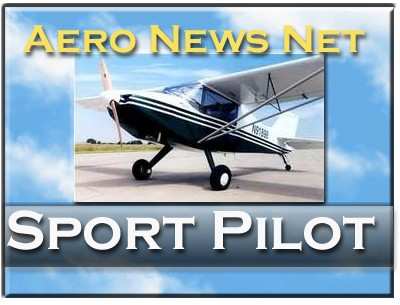
ANN's John Ballantyne asked leaders in hang gliding,
ultralighting and paragliding what they feel is significant about
sport pilot to their aviation cultures.
Jayne DePanfilis, Executive Director, United States Hang
Gliding Association
Hang glider and paraglider pilots are "greatly relieved" that
sport pilot was issued without damaging the regulation for hang
gliding (FAR Part 103), reports Executive Director, Jayne
DePanfilis. There has been an underlying fear over the years that
FAA would leak some regulatory change into Part 103 while creating
sport pilot, she says.
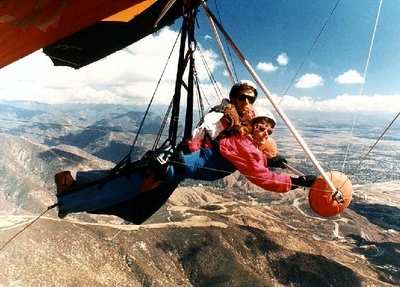
USHGA has no big issues with sport pilot, Jayne reports. In fact
it is mostly good news, such as resolution to a fear that hang
gliders might have to be manufactured according to a "consensus
standard." The dominant hang glider manufacturer in the world,
Wills Wing, said it simply would not be feasible to build hang
gliders to such a standard. Happily, no such requirement was
included in sport pilot.
FAA enforcement is largely a non-issue for hang glider and
paraglider folks according to Jayne. The limitations in Part 103
accommodate most single-place flights without difficulty. Again,
the lack of change to Part 103 is a great relief for hang glider
and paraglider pilots and instructors. Based on many discussions
with FAA, she expects FAA to continue to issue tandem (two-place)
exemptions to USHGA for the training program.
She reports that there is confusion about the requirements for
the pilots and aircraft involved in the aerotowing of hang gliders.
The stated requirement for the tug pilot to possess an FAA Private
Pilot certificate is not a big issue, Jayne reported. However, a
lack of full understanding about requirements for the tug will be
required before evaluating the complete impact of Light Sport
Aircraft requirements on the hang glider towing community.
Jayne added that the required travel and high workload to get
sport pilot has taken its toll. Others ANN spoke with agreed that
the pressure of the release of sport pilot right before the opening
of EAA AirVenture is formidable.
(I hope she won't mind if I repeat that she tried to turn off
her TV this morning with the cell phone. It is time for a nap!)
Jim Sweeney, President, North American Powered Parachute
Federation
Jim thinks that the entire "Ultralight" community should be
relieved to see the final sport pilot rules. FAA was good to their
word that they would leave ultralight regulation FAR Part 103
alone. This is the way it should be -- Part 103 is left as it
was.
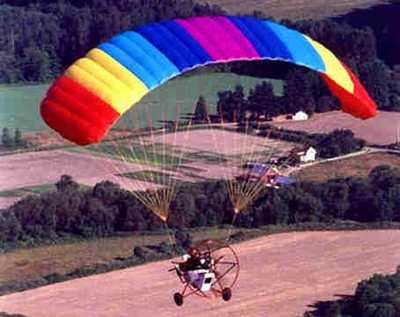
To a question about if sport pilot is a big improvement for
powered parachuters, he says, "Yes and No." He says those who would
like to carry a passenger will now have a way to legally do so. FAA
created this opportunity for those who are willing to operate in
compliance with traditional aviation rules of FAR Parts 91 and
61.
The down side, says Jim, is that the price of playing poker is
going up. "I am not sure how to get one without the other," he
said.
There will be a pilot contingency that will see sport pilot only
as an increase in expense. If they can comply with FAR 103, no
problem. If not, they will have problems with sport pilot.
Regarding future enforcement, Jim says, not long from now, an
inspector who is going down the road at 45 mph, and sees a
two-seater flying, can just look for the FAA "N" registration
number. If the machine is displaying the "N" number, probably
nothing more will happen. But if not, there will be a question in
the mind of that inspector. This makes an enforcement perspective
more definitive after sport pilot takes hold. Jim doesn't think FAA
will go out of their way to increase enforcement, but when an
occurrence arises they will have more clear enforcement
guidance.
Jim also says the industry was looking for a better method of
compliance before Sport Pilot came along. He would like to think
that we'll now see more compliance rather than a focus on
enforcement. If folks play by the new rules, enforcement is not an
area we will have to be concerned with, he concluded.
Jim says the real process has just begun. Advisory Circulars are
in the works along directives and orders intended to interpret what
has just happened. "Now our pilots are subject to Part 91 and 61,
which will require additional training to help each pilot get
through the knowledge test. If the knowledge test is too hard and
discouraging, word will get our quickly and that's how we could get
into compliance issues. Hopefully the knowledge test will be
appropriate to powered parachuting and thereby encourage compliance
by many.
But he believes there are a lot of inconsistencies in the new
sport pilot rule.
Among them: differences between the preamble language and actual
rule. For example the preamble says that an experimental Light
Sport Aircraft may not fly over congested areas. Yet the table of
standards within the actual rule says experimental Light Sport
Aircraft may fly over un-congested and congested areas.
Another example of upcoming challenges is that when applying for
an FAA N number and airworthiness certificate for an existing "fat"
or two-seat "Ultralight." What happens during the time between when
the FAA N number is issued but the airworthiness inspection has not
yet been satisfactorily completed? Can the machine be flown during
the application time?
Jim points to FAA's written expectation for 15,000 existing
ultralighters to be applying for sport pilot. So, Jim concludes,
these kinds of problems will probably come up about 15,000
times.
Jim Stephenson, CEO, Aero Sports Connection
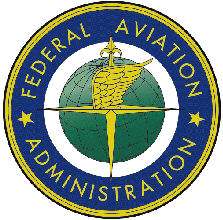 ASC likes sport pilot. Stephenson
tells us that FAA adopted many of the ASC recommendations made
during the development period. If anything, it is that FAA did
exactly what we all said, and it is like, "Now what do we do?" he
jokes. Stephenson also says issuance of sport pilot is the start of
a very long journey. "We have got to get in and make it work."
ASC likes sport pilot. Stephenson
tells us that FAA adopted many of the ASC recommendations made
during the development period. If anything, it is that FAA did
exactly what we all said, and it is like, "Now what do we do?" he
jokes. Stephenson also says issuance of sport pilot is the start of
a very long journey. "We have got to get in and make it work."
He suggests he'll have to see the implementation issues in the
FAA Advisory Circular (AC) on implementation. The rule will have to
be made readable for members. "Now we know the answer s to the big
questions like how heavy, how fast and so fourth. But many, many
issues will have to be worked through. Eventually these things will
be worked out as the training exemptions go away," Stephenson
says.
What's down the road in terms of enforcing Sport Pilot?
Stephenson wants to provide over-weight, single place machine
pilots a clear avenue to get legal in the next 3 years. He
theorized that those who are flying illegally now with no
exemptions or attempts at compliance with present law, will simply
ignore sport pilot and remain illegal. Jim has no sympathy for
them. "Sport pilot is going to happen, and it is not a heavy
version of ultralight regulation Part 103 where FAA will continue
to look the other way. And it shouldn't be that way. Our community
has gotta get right with the world. We talked the talk, now let's
walk the walk."
Jim doesn't see any killer issues at this point and states that
many contentious issues were worked out before the rule was
finalized. An example was the threat of a limitation for sport
pilot to the specific make/models of Light Sport Aircraft in which
they received check-outs. That limitation was dropped in the final
rule for which Jim is thankful.
Jeff Goin, President, United States Powered Paragliding
Association
"The hugest great thing is that ultralight regulation FAR Part
103 was left unchanged," says Jeff. "Possibly a whole industry will
be reborn as originally envisioned at the issuance of FAR Part 103.
"Sport pilot has no impact on powered paragliding because FAA has
promised to continue issuing tandem (two-place) training exemptions
or to modify Part 103 to permit tandem powered paragliders."
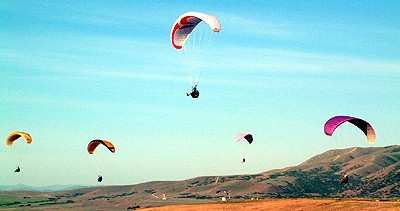
Jeff has a theory: those who will want to learn to fly a single
place trike, or other ultralight, will have to find a sport pilot
instructor and learn two-place. The notion of single place training
is folly to Jeff. He comments that many student crashes from single
place instruction caused a lot of the problems in the early years
of Ultralighting.
So, if the community embraces sport pilot strongly, the only
Light Sport Aircraft instructors for his light, single place Cosmos
Samba, powered hang glider, to pick an example, will be sport pilot
instructors in their two-seaters. Jeff sees nothing wrong with
that, exactly, although it may cost a little more.
Goin thinks acceptance of sport pilot is likely to be dependent
on FAA enforcement levels. If the FAA increases enforcement, there
will be more compliance. He projects the FAA will probably do a
little more enforcement.
Jeff doesn't know sport pilot well enough to fully understand
all the issues. It has only been out for 24 hours. He comments that
there needs to a much more readable version, which the
organizations will probably soon provide.
Dale Hooper, Executive Vice President, United States Ultralight
Association
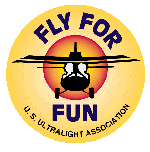 The USUA has no major
problems with sport pilot, according to Hooper. Still, he says
there are significant questions about implementation and
transitioning from where we are to the world of sport pilot.
The USUA has no major
problems with sport pilot, according to Hooper. Still, he says
there are significant questions about implementation and
transitioning from where we are to the world of sport pilot.
Dale suspects that some of those implementation issues could
become major problems in time. "We will just have to see." USUA is
in close contact with FAA as an Advisory Circular is being written
to describe the transition process. The sport pilot rule is about
450 pages long, the draft FAA Advisory Circular (AC) that will
explain how sport pilot works, will probably be about 12,000 pages,
jokes Dale with a wink.
Dale reports that one of the biggest upcoming issues is getting
ultralight instructors transitioned from the existing training
exemption programs to sport pilot CFI instructors. "The way FAA
handles this is a serious matter," he says.
Hooper promises USUA will make sure there is a list of
ultralight instructors who have proven themselves as Basic or
Advanced Flight Instructors and want to teach using single seat
ultralights. This will accommodate students who want to learn using
single seaters rather than being forced to go to a sport pilot CFI
who probably will teach in a two-seater for much more money.
That said, Hooper thinks the USUA is encouraging its instructors
to make the transition and start teaching Sport Pilot. USUA likes
sport pilot, but it is only one of several regulatory choices, he
says. Ultralight regulation Part 103 is valid and useable. So USUA
aims to have a comprehensive list of instructors with broad enough
choices to respond to every student's preferences.
The USUA will certainly continue to protect ultralight
regulation Part 103, he says.
Down the road, Hooper believes the FAA has been pretty clear
about future enforcement. He says FAA inspectors have definitely
become more aware of the Part 103 requirements and some ramp checks
have already taken place recently. "Enforcement may be no longer
ignored," he says.
"It's a relief to no longer have a rule in process," he tells
ANN. "Now it is all about implementation. The next few years will
be a busy time."
 ANN's Daily Aero-Linx (05.06.25)
ANN's Daily Aero-Linx (05.06.25) ANN's Daily Aero-Term (05.06.25): Ultrahigh Frequency (UHF)
ANN's Daily Aero-Term (05.06.25): Ultrahigh Frequency (UHF) ANN FAQ: Q&A 101
ANN FAQ: Q&A 101 Classic Aero-TV: Virtual Reality Painting--PPG Leverages Technology for Training
Classic Aero-TV: Virtual Reality Painting--PPG Leverages Technology for Training Airborne 05.02.25: Joby Crewed Milestone, Diamond Club, Canadian Pilot Insurance
Airborne 05.02.25: Joby Crewed Milestone, Diamond Club, Canadian Pilot Insurance





 The USUA has no major
problems with sport pilot, according to Hooper. Still, he says
there are significant questions about implementation and
transitioning from where we are to the world of sport pilot.
The USUA has no major
problems with sport pilot, according to Hooper. Still, he says
there are significant questions about implementation and
transitioning from where we are to the world of sport pilot.

